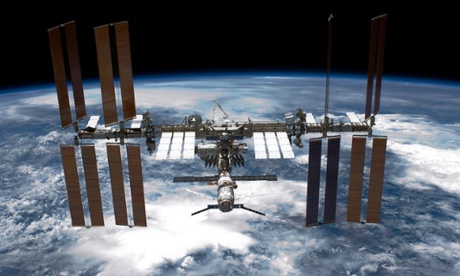Sea plankton have been found on the International Space Station – but how did they get there?Russian cosmonaut Vladimir Solovyev says the plankton were blown up into space by air currents on earth
Sea plankton have been found on the outside of the International Space Station, a Russian news agency reports.
Itar-Tass says scientists on the space station, whose first component was launched into orbit in 1998, found the plankton – a source of food to many sea creatures – when taking samples from the windows (or “illuminators”).
This, the agency writes, confirms “that some organisms can live on the surface of the International Space Station (ISS) for years amid factors of a space flight, such as zero gravity, temperature conditions and hard cosmic radiation. Several surveys proved that these organisms can even develop.”
Stuff website reported that the plankton samples “were not carried there at launch, but are thought to have been blown over by air currents on Earth”.
Head of the Russian ISS orbital mission Vladimir Solovyev said the results of the experiment “are absolutely unique”.
He said the marine micro-organisms were not native to blast-off site Kazakhstan, and may have been “uplifted” to the station at an altitude of 420km.
“Plankton in these stages of development could be found on the surface of the oceans,” he said.
“This is not typical for Baikonur [in Kazakhstan]. It means that there are some uplifting air currents which reach the station and settle on its surface.”
Is there a better explanation for the plankton’s trip out of this world?
http://www.theguardian.com/science/2014/aug/21/sea-plankton-have-been-found-on-the-international-space-station-but-how-did-they-get-there
